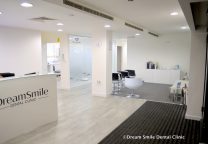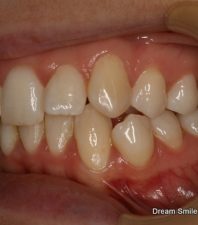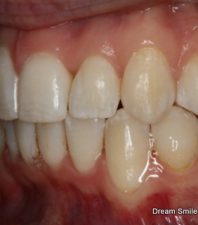Invisalign braces
Facial rejuvenation

Many facial wrinkles occur when we use our muscles to form facial expressions. The wrinkles formed during facial expression are called dynamic wrinkles. When we are young our skin springs back to its initial position at rest but as we get older these wrinkles remain on the skin. The wrinkles and folds present at rest are called static wrinkles.
This process occurs because natural substances such as collagen, elastin and hyaluronic acid that provide the skin with structure and volume decrease with age. This, together with environmental factors such as exposure to sunlight, smoking and stress contribute to the creation of wrinkles and folds.
What are anti-wrinkle injections?
Back to topAnti-wrinkle injections, are composed of a natural, purified protein. Due to restrictions the actual name of the anti-wrinkle injection cannot be used here.
When injected into specific facial muscles, wrinkle-causing muscles are relaxed to reduce dynamic lines and create a younger, softer, and natural-looking appearance.
How do anti-wrinkle injections work?
Back to topAnti-wrinkle injections treat wrinkles caused by the contraction of facial muscles. They inhibit the transmission of neurotransmitter from the nerve to the muscle and stop the muscle from contracting and forming wrinkles. For example, they can be used to relax the muscles of the frown to prevent the appearance of a vertical frown line, or around the eyes to prevent the appearance of crows feet. It is important to note that anti-wrinkle injections do not immediately improve static lines, or lines that are present at rest. These can be treated by adding volume with dermal fillers or through skin resurfacing. However, usually over a number of anti-wrinkle treatments, the skin that is normally creased has time to rest and recover and an improvement in static lines may be gradually seen. The fact that anti-wrinkle injections also stop the constant compression of skin, prevents the permanent ‘etching’ of wrinkles in the areas treated.
Anti-wrinkle injections are most commonly used for treatment of frowns, forehead lines, and crows feet. They can also be used to create an eyebrow lift, to stop the mouth from pulling down, reduce gummy smiles (by lowering the upper lip), and to reduce neck bands.
The treatment process
Back to topTreatments with anti-wrinkle injections involve having a number of small injections in the treated areas. The process takes only a short time to perform. The needles used are extremely fine, and only a small volume is injected. The discomfort experienced is minimal and well tolerated. You can opt to have anaesthetic cream or ice put on the area prior to treatment to help reduce any discomfort. The effects of anti-wrinkle injections are generally seen only after one to two weeks. You will gradually notice a gradual relaxation of the muscles treated. This can start at 2-3 days, but may take up to two weeks to be very noticeable.
How long do anti-wrinkle injections last?
Can I resume normal activities after treatment?
Normal activities may be resumed after treatment. However, you will be instructed not to exercise, lie down, or touch the treated areas for 4 hours.
Are anti-wrinkle injections safe?
Anti-wrinkle injections have been used for cosmetic purposes for over a decade and for medical purposes for even longer without any reports of long-term side effects. In UK, there are six registered indications for the use of anti-wrinkle injections. These are; for children with cerebral palsy in particular body muscles to help reduce spasticity and allow normal movement, to reduce spasms of they eyelid, the treatment of cervical dystonia (neck muscle spasms), treatment of primary hyperhidrosis of the axillae (underarm sweating), treatment of frown lines, and the treatment of focal spasticity in adults.
What are the side effects of anti-wrinkle injections?
Generally, there are few side effects to treatment, and no downtime involved. Occasionally, a bruise may appear over the treated area, and this is more common around the eyes. This can be covered with make-up if applicable. There is usually some transient redness and swelling of the treated area (similar to a mosquito bite), and this usually lasts for less than one hour. Other possible adverse outcomes include ; asymmetrical results, failure to cause a significant change in the wrinkles (usually due to inadequate dosing), puffy eyes (for treatments around the eyes), and a drooping mouth corner (from misplacement of the injections).
When treating the frown with anti-wrinkle injections, approximately one percent of people experience movement of the product into one eyelid and this causes a partial eyelid droop that can last for one month. Any side effect of treatment is temporary and will resolve naturally. A particular eyedrop can be given to temporarily reduce the effect of this side effect if necessary.




